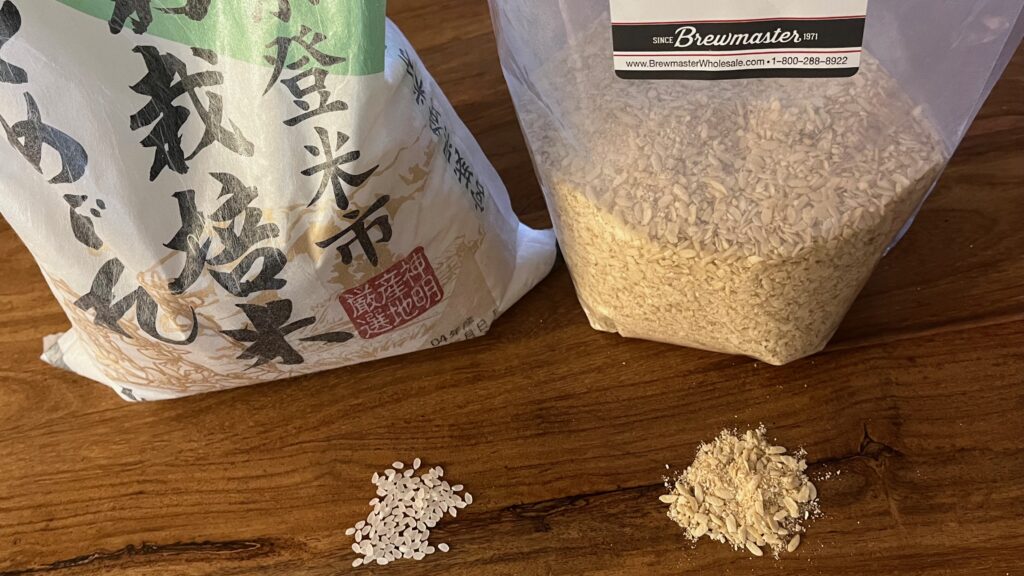
What pops into your mind when you hear “Japanese Lager”? Asahi? Kirin? Sapporo? You got it! Now, how would you describe them? Light, crisp, dry, refreshing… perhaps a touch bland or similar to Budweiser?
One key difference between Japanese lagers and other styles lies in their use of rice as an adjunct sugar source alongside barley. (Happoshu: a lighter beer using more rice for a lower tax in Japan, FYI.) I once used flaked rice for a homebrew lager that actually snagged a gold medal for the International Pale Lager category at a local homebrew competition!
But then, a question lingered: What truly sets Japanese lagers apart? American lagers like Budweiser use rice too. Could the rice type hold the answer? Perhaps the sticky rice I grew up with in Japan played a role?
Sticky rice was omnipresent in my childhood, the foundation of every meal. Here in the States, rice isn’t quite as ubiquitous, and sticky rice usually requires a trip to an Asian grocery store.
Curiosity bubbling, I decided to brew a Japanese lager with Japanese sticky rice. I knew I’d need to cook it first (a process called gelatinization or cereal mashing) to make the complex starches accessible to the enzymes that convert them into fermentable sugars later in the main mash process.
To assess the impact of this swap, I brewed two side-by-side batches: Batch A with sticky rice and Batch B with my trusty flaked rice.
This format takes inspiration from the brilliant minds at Brulosphy.com and ScottJanish.com, two websites I deeply respect.
Recipe (5.5 gal):
| Grain | Percentage |
| Pilsner Malt | 60% |
| Japanese Sticky Rice (or Flaked Rice) | 25% |
| Pale Ale Malt | 10% |
| Caramel Malt 20L | 5% |
| Water Chemistry | Ca | Mg | Na | Cl | SO4 | HCO3 |
| Concentration (ppm) | 32 | 14 | 68 | 150 | 75 | 105 |
| Mash | Temperature | pH | Duration |
| Saccharification Rest | 148F (64C) | 5.6 | 60 min |
| Hops | Amount | Timing |
| Hallertauer Mittelfrueh | 1 oz | 30 min |
| Tettnang | 1 oz | 30 min |
| Hallertauer Mittelfrueh | 1 oz | 5 min |
| Tettnang | 1 oz | 5 min |
| Yeast | Amount | Pitched Temperature |
| W-34/70 | 2000 mL starter | 55F (13C) |
| Fermentation Profile | Temperature | Duration |
| Primary | 55F (13C) | 5 days |
| Diacetyl Rest | 65F (18C) | 5 days |
| Cold Crash | 34F (1C) | 1 day |
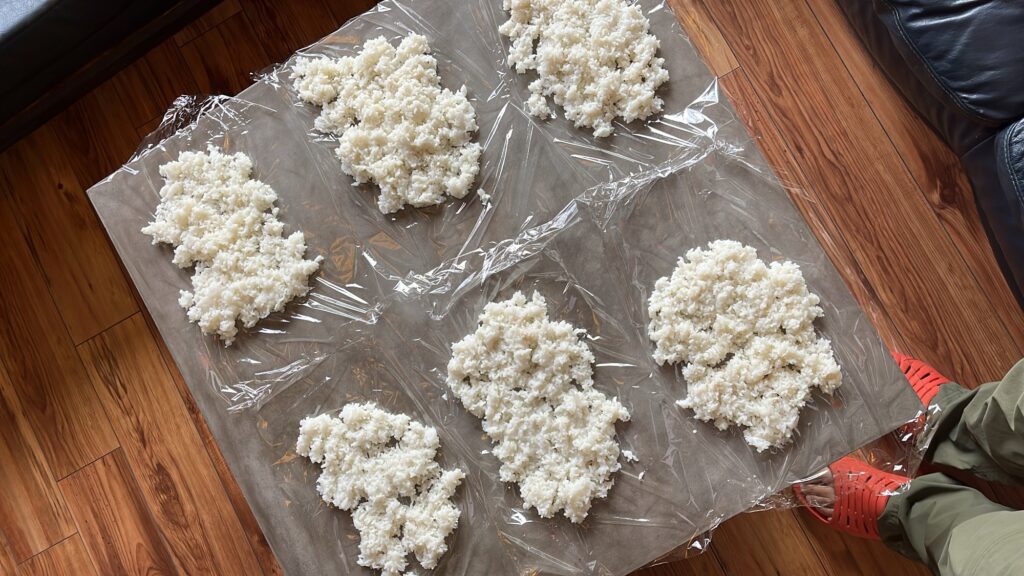
Brew day involved cooking 2.5 lbs of rice and cooling it down to the room temperature. I didn’t want it to raise the mash temperature above my target (dropping it is harder!), but adding the cooked rice actually caused a substantial drop, requiring an elaborate adjustment.
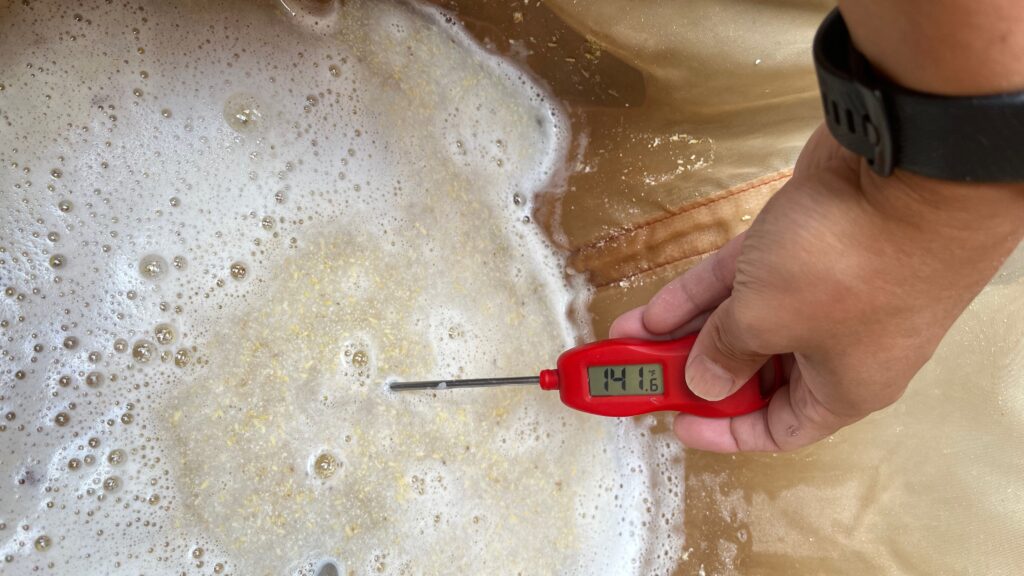
Despite my concern, the rice dispersed nicely without clumping. However, during mashing, the rice pieces remained intact, sparking a touch of paranoia – were the sugars being extracted properly?
During the lautering (separating the wort from the grains), I squeezed both batches, extracting substantially more liquid from the already-wet sticky rice, boosting the Sticky Rice Lager’s wort volume. However, this didn’t significantly dilute the final product, and both batches had similar OG (original gravity) readings.
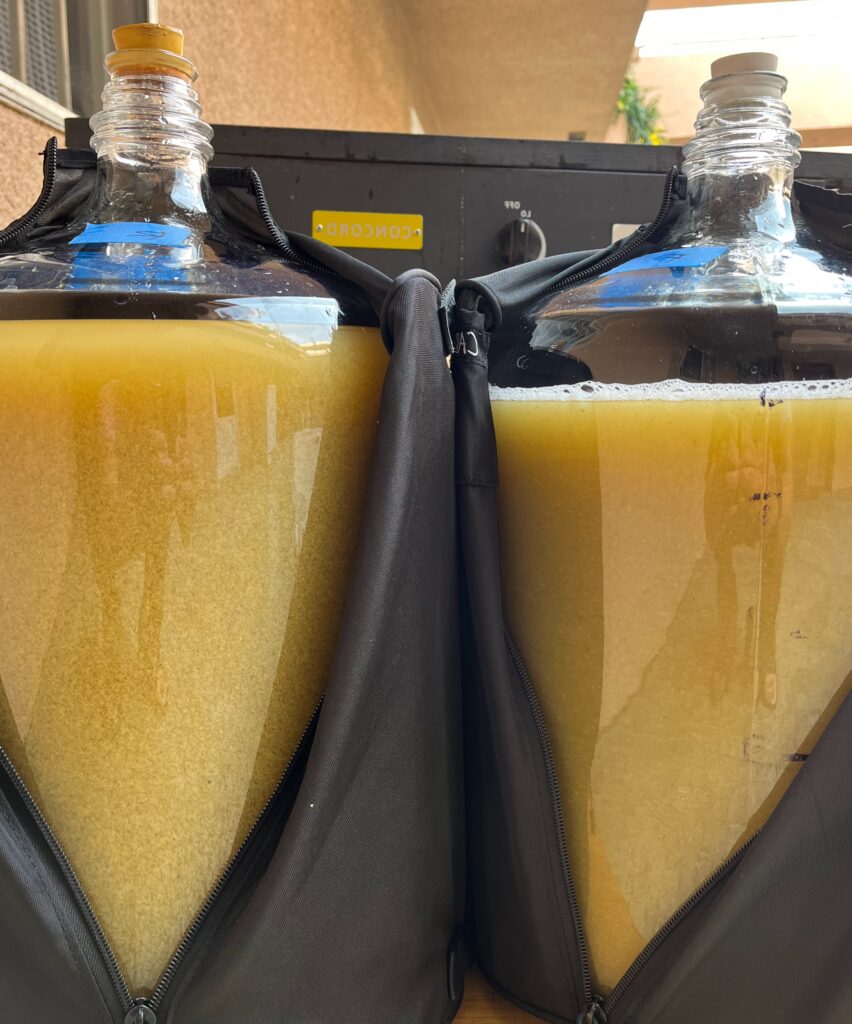
Left: Japanese Sticky Rice Lager, Right: Flaked Rice Lager
| Sticky Rice Lager | Flaked Rice lager | |
| OG | 1.045 | 1.047 |
| FG | 1.009 | 1.008 |
| ABV | 4.7% | 4.9% |
| pH | 4.1 | 4.1 |
The Verdict:
Both lagers finished with similar numbers, though Sticky Rice Lager showed slightly lower attenuation. Their appearances looked pretty identical while Sticky Rice Lager was slightly paler.

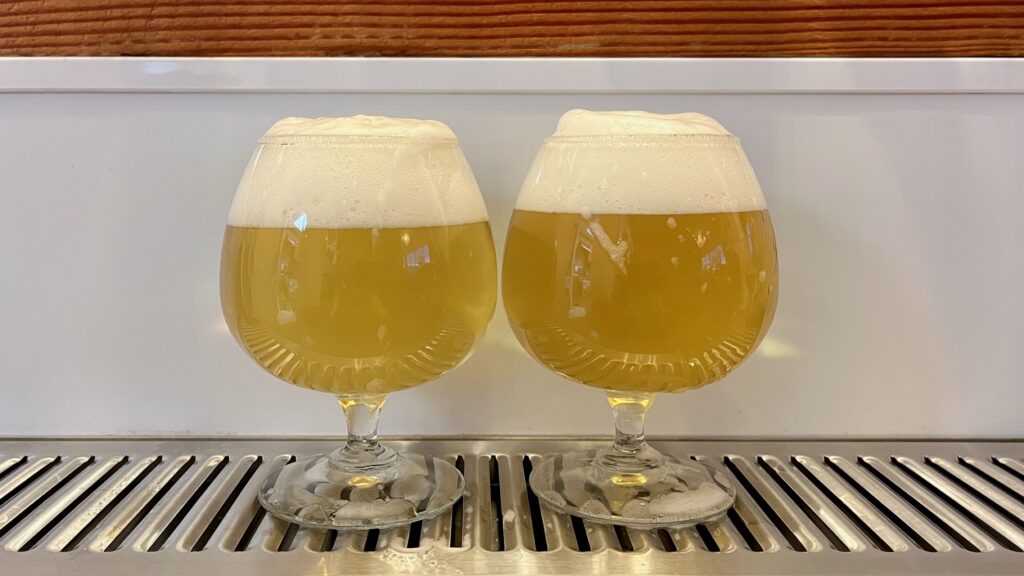
Left: Japanese Sticky Rice Lager, Right: Flaked Rice Lager
But the sensory experience was strikingly different. Sticky Rice Lager emitted a noticeable sulfur note reminiscent of authentic German Pilsners, a stark contrast to the neutral, almost Japanese milk bread-like aroma of Flaked Rice Lager. Mouthfeel was another key difference: Sticky Rice Lager delivered a crisp bite despite its slightly higher FG (final gravity), while Flaked Rice Lager leaned towards creamy.
Five “semi-blind triangle tests” confirmed my suspicions: I identified the randomly-mixed unique sample every single time! This statistically proves that using sticky rice imparts a significant sensory impact compared to flaked rice.
Sharing these beers at the SoCal Cerveceros meeting brought about divided opinions. Members seemed to slightly favor Flaked Rice Lager, though honestly, I was a tad too tipsy at the time to remember everything clearly, lol…
I haven’t plunged down the rabbit hole of Japanese rice and sulfur note connections yet, but I’ve always recognized the unique smell when Japanese rice is cooked, which might translate as a sulfur note in beer. I haven’t cooked rice since then, but instead I’m now in front of my usual taco stand (yes, I’m a dedicated arroz y frijoles guy!), and guess what? These cooked tortillas are giving me sulfur notes too!
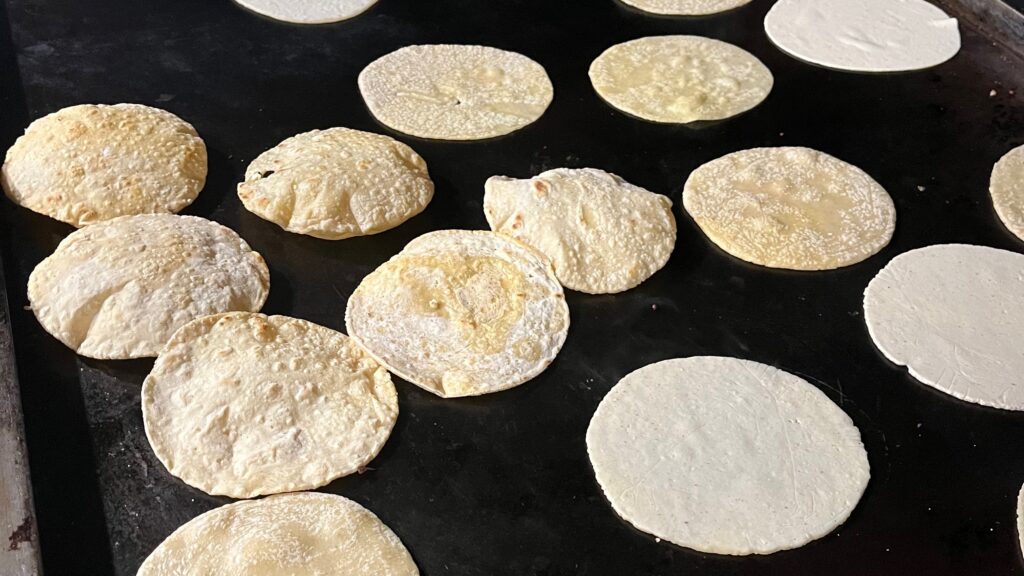
The journey to craft the perfect Japanese lager for LA beer lovers continues. Cheers! Kanpai!!
